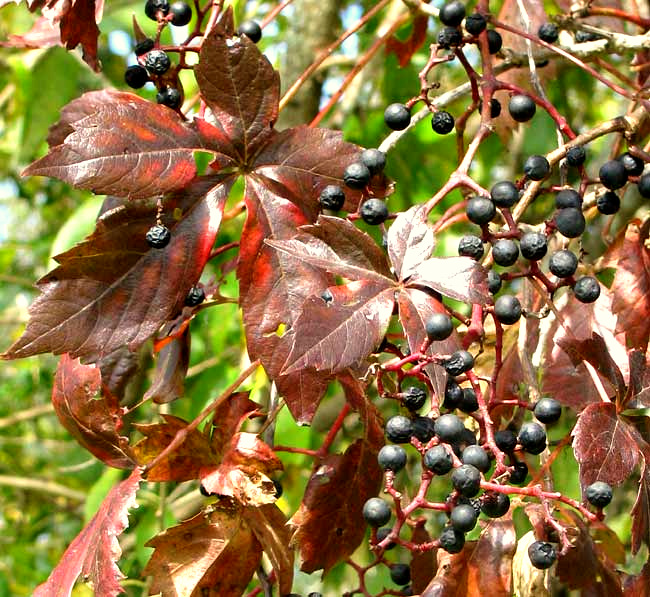Excerpts from Jim Conrad's
Naturalist Newsletter

from the the November 1, 2009 Newsletter, from near Natchez, Mississippi
VIRGINIA CREEPER
Dangling from an Osage Orange's branches, a Virginia Creeper vine, PARTHENOCISSUS QUINQUEFOLIA, offered a little reddish color to the landscape the other day. You can see the woody vine's distinctive leaves consisting of five leaflets joined at their bases (the leaf is "palmately compound") and fruits above.
Widely distributed in the eastern and central United States and nearby Canada, Virginia Creepers often climb to the tops of fenceposts or telephone poles, then cascade back toward the ground. They climb into trees but, except in environments such as plantation- pine plantings, seldom overtop their hosts the way Kudzu might. The vines attach themselves to their supports by adhesive disks at their tendril ends.
As you see, the vine is pretty enough to be cultivated as an ornamental. In fact, Virginia Creeper is regarded commercially as an excellent covering for walls, trellises, arbors or fences.
The grapelike fruits (Virginia Creeper belongs to the Grape Family, the Vitaceae) contain oxalic acid so are regarded as inedible for humans. I find them too bitter to even consider eating, but birds seem to like them.
From the fruits the Kiowa indigenous Americans once made a pink dye for their skin, and feathers worn in war dances. Various medicinal uses have been documented for the plant as well.